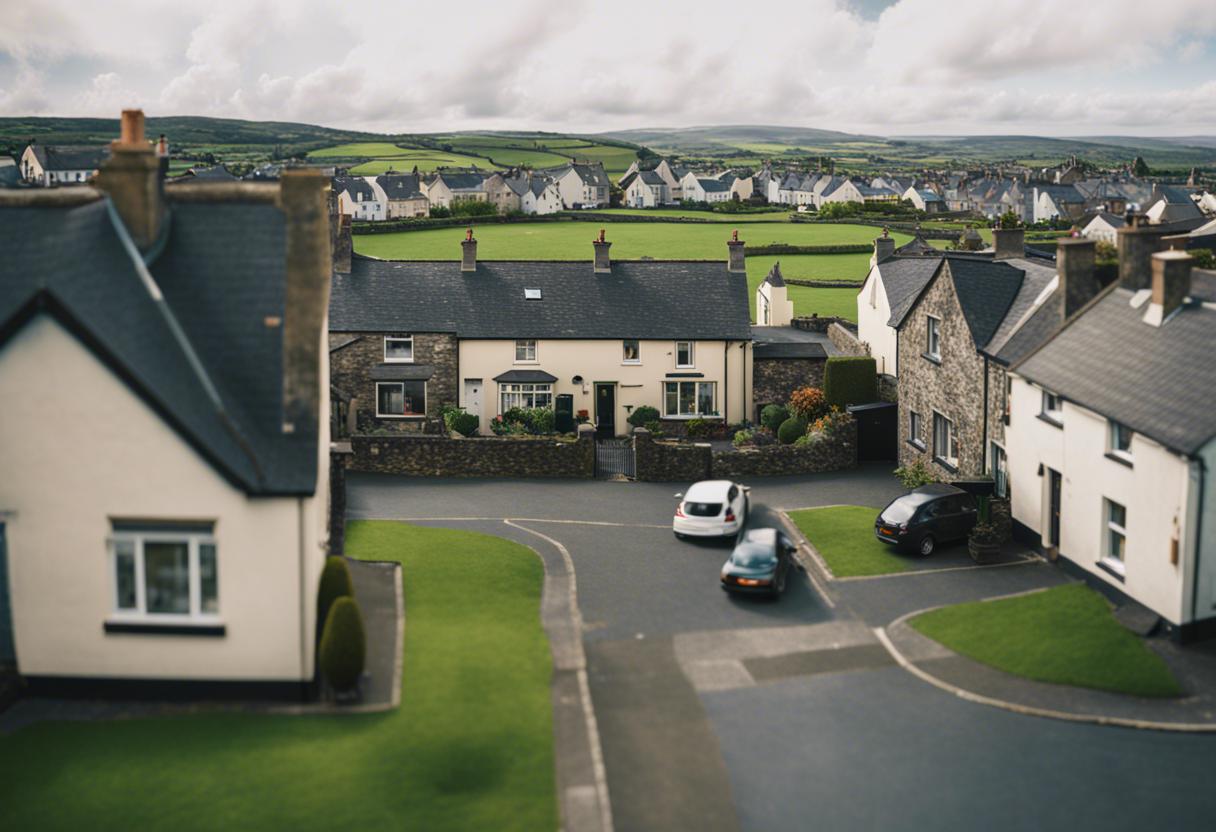Traditionally, a surge in interest rates has resulted in either a dip or slowdown in house prices. However, this logic is no longer applicable as property markets worldwide are now seemingly impervious to increased borrowing costs, returning to their buoyant state.
Since the initiation of 10 interest rate increments by the European Central Bank (ECB) in July 2022, the property values in Ireland have witnessed an escalation of 10 per cent, and, in Dublin, average prices have risen by approximately 7.5 per cent.
Over the last 10 succeeding months, local property price inflation has stepped up, ranging from 1.1 per cent in the previous year’s August to 8.6 per cent in this year’s June. Dublin’s annual growth rate is even more pronounced, showing a 9.3 per cent increase.
How, then, are heightened interest rates not affecting prices more substantially? Multiple reasons exist. Following the 2008 economic downturn and an extended period of extraordinarily low interest rates, a larger number of homebuyers have decided on fixed-rate mortgage contracts, effectively defending themselves and the broader market from fluctuating interest rates.
Such contracts discourage homeowners from relocating, as acquiring a new mortgage, possibly with elevated rates, would be necessary, leading to a significantly low turnover in Ireland’s market.
At present, around 50-55 per cent of local mortgage holders utilise fixed-rate contracts. Data from estate agency Sherry FitzGerald reveals that 69 per cent of all fresh property purchasing loans within 2024’s first six months involved fixed rates spanning more than a year. This is far higher than the 21 per cent recorded for the first half of 2003.
Additionally, the ECB’s perspective observes that an elevated percentage of individuals on fixed terms – seen not only locally but in Europe as a whole – has diluted monetary policy’s influence, explaining the minor technical recessions faced by Europe and Ireland last year, courtesy of Frankfurt’s fervent monetary tightening.
Several unique factors within Ireland also disrupt the conventional connection between interest rates and property prices.
In the preceding year, 50,234 properties were purchased by private households in the Republic, though only 35,229 residential property mortgages were taken out, as indicated by the Irish Banking and Payments Federation (BPFI). This data hints that nearly a third of these homes were acquired with cash, eliminating the necessity for mortgage loans.
The question now emerging is what is transpiring with Ireland’s housing predicament and what is the next path?
Many of the buyers are suspected to be relying on capital from earlier property sales or dipping into their savings. Some might be expatriates re-establishing their lives in Ireland. Despite the elevated borrowings costs, these purchasers are not deterred.
One of the major issues in the Irish housing sector revolves around non-domestic acquisitions, those conducted by the state (local government and authorised housing bodies (AHBs)) and establishments or funds.
Though steep interest rates have impacted institutional operations, state organisations seem to be purchasing more properties than before, spurred on, perhaps, by government-led political urgencies.
In the previous year, these agencies acquired just under 6,000 new properties, bolstering demand and market prices concurrently. This statistic excludes purchases made by the Land Development Agency (LDA).
After eliminating state and institutional acquisitions and singularly constructed properties, a mere fraction of new homes available go on sale through estate agents (less than 10,000 out of the 33,000 total from the preceding year).
Moreover, the government provides considerable subsidies to home purchasers, with schemes like Help to Buy and First Home continuously being expanded.
These initiatives aim to motivate more production from builders and estate developers whilst reducing the affordability chasm for potential buyers. At a more general level, these subsidies also uphold market prices.
Forecasts that the ECB’s ten interest rate advancements would instigate a housing market downfall have been notably inaccurate.
Another significant variable is income, as a period of swift disinflation has led to an upturn in real wages, balancing the influence of growing rates on borrowers’ ability to acquire loans. More relaxed credit conditions have also proven beneficial for buyers. In 2022, the Central Bank increased the top restriction on the loan-to-income ratio criterion for first-time buyers from 3.5 times to 4.
The growth rate of the Republic’s populace is surpassing previous estimations, primarily due to immigration. Property company Savills reports that for every single newly constructed property unit between 2015 and 2023, the population saw an increase of 3.8 individuals – a ratio close to 4:1. This is the most significant disparity among the nine countries analysed, claims Savills’ research director, John Ring. He highlights that the situation in Ireland stands at 80% higher than the UK’s ratio (2.1) and two-fold that of Australia (1.9). “Although many countries globally grapple with housing shortages, it’s crucial to appreciate the distinctive severity faced by Ireland”, remarked Mr. Ring. Forecasts implying that the ECB’s tenfold hike in interest rates would lead to a property market downturn appear to have been considerably off target. Regardless of the multiple influences on property prices, interest rates have never been such an insignificant factor.

